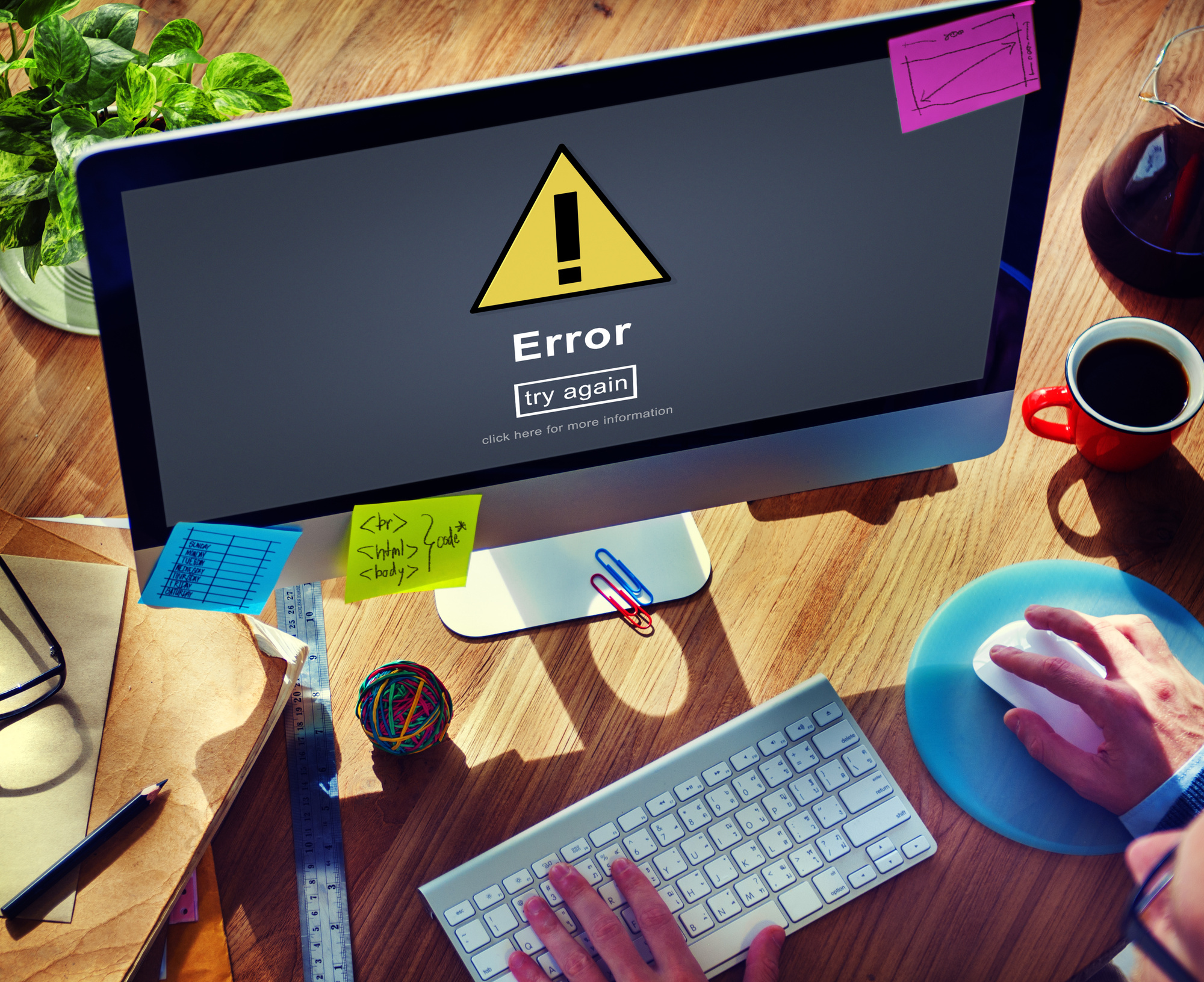As a website owner, you’ve probably already seen error messages appear on your website.
It’s important to monitor your site for errors and know how to solve them.
In some cases, it’s the fault of a user navigating the site incorrectly. However, there are several errors that you can eliminate by doing some work on your end. It may be as easy as fixing a broken link or URL.
Each of these errors has a code attached to it that details what it’s all about. This is the key to solving the errors and getting your site back up and working.
Curious to find out what the most common ones are?
You’re about to find out seven common website error messages and their causes.
1. 500 Internal Server Error
The 500 internal server error is one of the most common website error messages.
It’s a catch-all error message used for general purposes. Basically, it’s found when no other error code applies, or the programmer has not identified the problem.
The meaning of it is right in the name.
The message is triggered whenever an internal problem is encountered by a web server. Usually, it means that the server is working too hard and is overloaded. Therefore, it can’t handle requests easily.
If your server is down, it’s usually bad news for both your business and site. It can cost you both time and money. Get it fixed as soon as possible.
There is a chance that a user can retry their attempt and get a different response. This may be a slippery slope, however, especially if your site sells something. If a user retries a request with their shopping cart, a duplicate order could be created.
2. 404 Not Found
The 404 error is the most frequent error according to some website error code lists as users come across. It occurs when someone tries to access a page that isn’t there. There are a few different causes that could be responsible.
One, the link is broken. Two, that page has been moved. Or three, the page was deleted completely.
In a nutshell, the requested resource was not found or it’s not available.
This is usually an easy fix. Many times the cause is that the user made a typo in the page URL. They may have entered an incorrect domain name.
Another reason is when older pages are being used. If someone wrote an article on your blog, they may have linked to a page. If that page no longer exists, there will be a 404 error.
It’s important to pay attention to these 404 errors as they impact users’ experience negatively.
For the savvy site owner, you can use the page as an opportunity. Make the 404 page helpful, don’t just use a standard “Page not found”. Include a list of suggestions for pages the user may have been trying to reach.
3. 408 Request Timeout
The 408 error message is often triggered by a user closing a page. It’s a code that signals that the user stopped the request prematurely. That is, before the server retrieved information.
Clicking a link too quickly, or pressing the button to stop a page loading are also causes. This message can also appear in relation to a really large file, or when a server is running slowly.
4. 503 Service Unavailable
Like the 500 error message, another server side error is 503 Service Unavailable.
If the website a user is trying to access is down, the server itself responds with this message. They won’t be able to do anything about this, so they will usually abandon trying to access the site. This is why it’s extremely important to monitor your site’s uptime.
5. 400 Bad Request
The gist of the 400 Bad File Request error is that a web server is telling a user their request to access was incorrect.
The URL could have been typed in wrong. An alternative reason could be that the particular page is not open to the public. A user who gets this message should check their URL carefully.
If they think it’s right, they can search the site to find the page they want.
6. 403 Forbidden
A 403 error happens when a user attempts to access a site’s forbidden directory. If there is no login opportunity on the page, this message is what will appear.
There is a way to solve the issue for your site users, though. Fix it by confirming that the correct file permissions are in place. For Linux files, this will involve adjusting the Owner and Group of the files and folders.
An incorrectly named homepage is another common cause of the error. It could be that there is no index page. You can check this by ensuring your homepage is called index.html or index.php.
Yet another possible cause is an empty http docs directory. Upload the site’s content to the right directory. Be sure to replace example.com with your site’s name.
7. 401 Unauthorized
A message that reads 401 unauthorized is similar to the 403 error. It means a user needs to log in with a username and password to see a page. It can also appear as a message that reads “Authorization required”.
If a username and password was already entered, it could be that the credentials aren’t valid.
The first fix that should be tried is confirming the page is at the right URL. A site owner can check for links that point to that page. It could be that a link that a user clicks on points to an incorrect URL which only authorized users can access.
A user can also navigate to the main page and find the login link. If it’s not there they may be able to set up a new account.
Get Rid of Website Error Messages on Your Site
Hopefully, now you’ve got the information you need to tackle website error messages. To provide the best experience for your users, it’s vital that your site stay up 24 hours a day.
There’s only so much you can do on your own. If you need help, we can offer free remote services. They eliminate downtime by monitoring your website, so check them out today.




